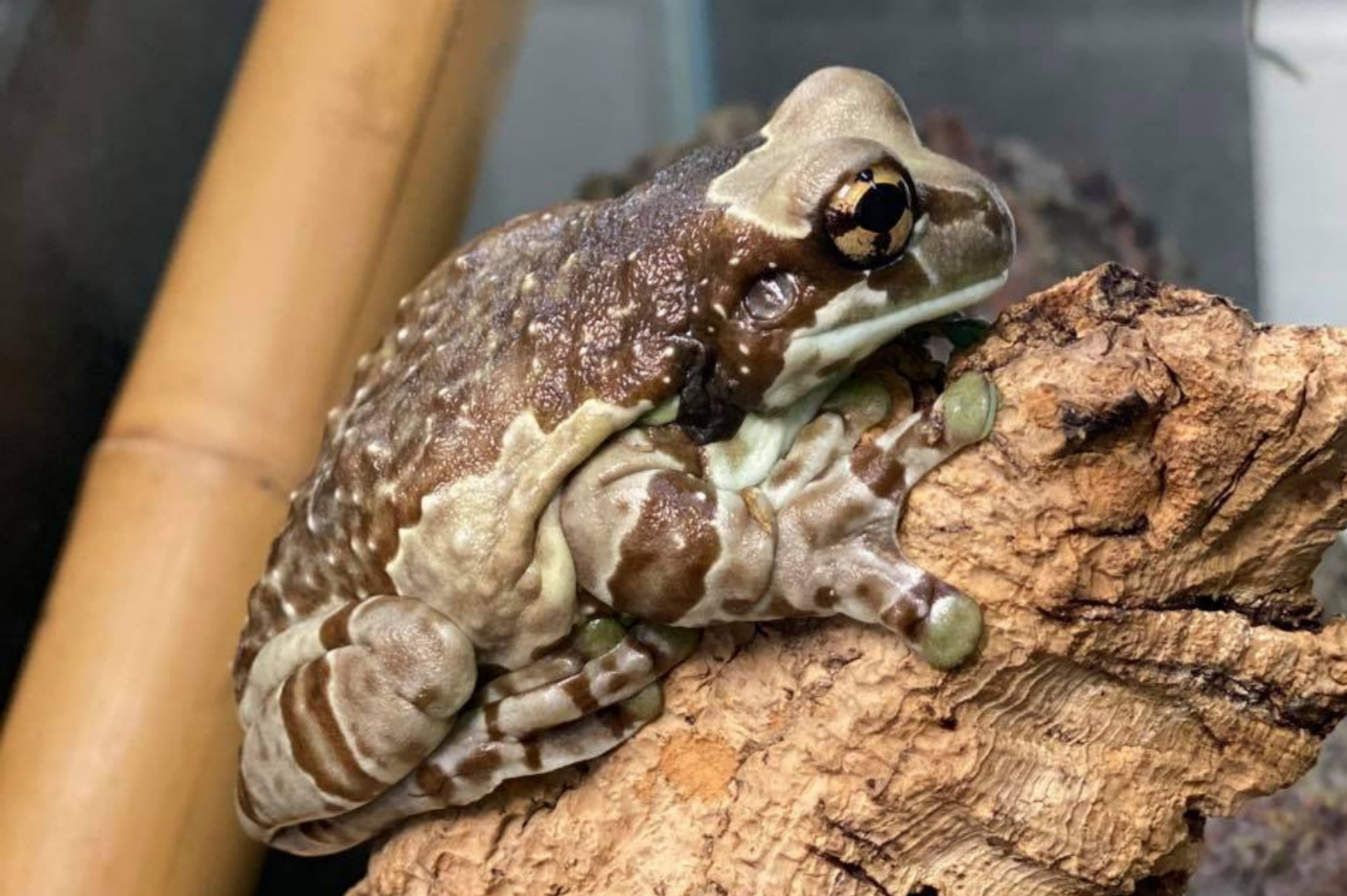Mission Golden-Eyed Tree Frog

Basic Information:
Scientific Name: Trachycephalus resinifictrix
Habitat: Mission golden-eyed tree frogs are native to the humid rainforests of South America, namely Colombia, Bolivia, Brazil, Ecuador, Peru, and Venezuela.
Diet: Mission golden-eyed tree frogs primarily eat insects, invertebrates, and small amphibians.
Size: 0.3 to 0.4 feet long
Weight: 0.01 to 0.03 pounds
Lifespan: 15 to 25 years
Distribution Map:
I.U.C.N. Conservation Status:

What does this mean?
Least Concern – a species determined by the International Union for Conservation of Nature (I.U.C.N.) to be pervasive, abundant, and thriving.
Our Mission Golden-Eyed Tree Frog:
Chip (Male) – Arrived at the Zoo March 28, 2019 (Birthday Unknown)
Did You Know?!
- Golden-eyed tree frogs are also called “milk frogs.” This is in reference to the milky, poisonous secretions the frog secretes when threatened. This secretion deters predators with its unpleasant taste and helps keep the frog hydrated.
- Golden-eyed tree frogs have large toe pads that allow for excellent grip: they can hold up to 14 times the animal’s body weight.
- Golden-eyed tree frogs will spend their entire lives in the tropical rainforest canopy. They will rarely, if ever, descend to the ground.
- Golden-eyed tree frogs are primarily nocturnal and spends their days hiding from predators in the leafy canopy of the rainforest. They emerge at night to hunt nocturnal insects.
- Breeding for golden-eyed tree frogs takes place between November and May. A female produces around 2,500 eggs, which will then hatch in 24 hours.
